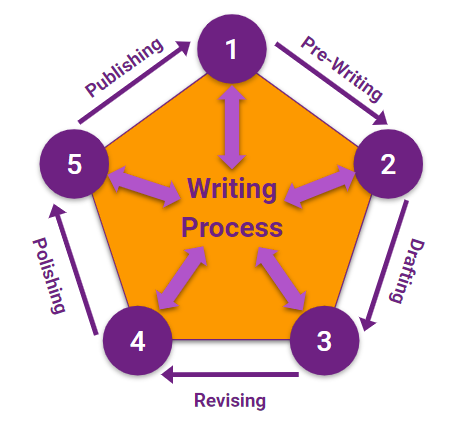Writing is a critical and powerful learning activity. Not only is it a very cognitively complex task, but it also forces us to think deeply about a topic in order to make sense of the information we’re trying to communicate. It helps us process our learning at a deeper level, and it can be a great metacognitive strategy that allows us to pause and reflect on our learning process. It’s an active learning strategy that can be successfully integrated into every subject area and grade level, and when we infuse the process with technology, we can make this powerful learning strategy even stronger.
No matter what subject you teach or which instructional approach you use in your classroom, it’s helpful to define the writing process more broadly than traditional text-based expository or literary writing. As our world has become more tech-infused, the writing process has expanded to include many forms of communication. Our final product might be written text printed in a familiar paragraph structure, but it might just as often result in a video production, a multimedia website, a podcast episode, or some other media-rich product. This process of writing with a multimedia focus is often called digital storytelling. While the final products may be shared in different formats, the process we use to prepare our ideas, draft our message, create and revise, and produce a polished final product is similar. In all of these contexts, we are still writing.

When we integrate technology, we can power up the writing process and improve the overall quality of students’ writing. In fact, there are meaningful opportunities to leverage technology in every phase of the writing process. When used well, this integration of technology can be transformative. It can empower writers who might otherwise struggle, and it can open up new opportunities for writers who have already experienced success.
There are many different versions of the writing process in use today, and it would be impractical to attempt to address each one individually in this article. Therefore, we’ll condense our version of the writing process down to five key stages that you will find in most, if not all, of these writing models: pre-writing, drafting, revising, polishing, and publishing.
Although we’ve listed the stages of our writing process as five sequential steps, the process is almost never this linear. In fact, it’s probably better to think of writing as a circular model or even a tangled web of five interconnected activities. Almost universally, good writers will move back, forth, and between steps multiple times to produce a quality final draft. While that is the messy reality of writing, it’s still helpful to have a framework to organize the various aspects of the writing process.
As we review each stage, we’ll offer technology-infused ideas that your students can use to improve their writing. However, don’t think of each step or tool in isolation. Consider how they may apply to other steps in the process. We also encourage you to think about how these strategies and tools intersect with other student-centered learning strategies, like the inquiry process and project-based learning.
Just as the steps of the writing process don’t live in isolation, the strategies embedded within each step can be useful far beyond the writing process and may apply to many other learning processes you employ in your classrooms. As you work your way through these resources, consider how you can blend new ideas with strategies that you already know are effective and determine where you can integrate them into your lessons. Specifically, consider how digital tools and strategies can power up and enhance the writing instruction for all students in your classroom.
Extend Your Learning
- Engage Students Through Inquiry Learning (AVID Open Access article collection)
- Inspire Students With Project-Based Learning (AVID Open Access article collection)
- Think It, Write It: Creative Writing Across the Curriculum (AVID Open Access article)
